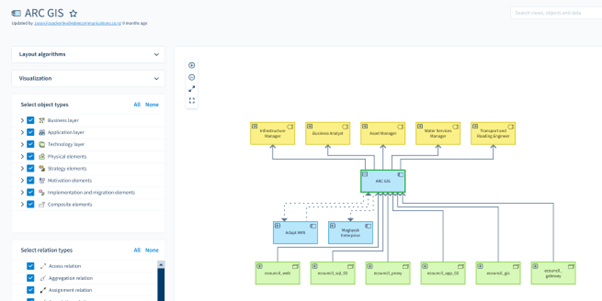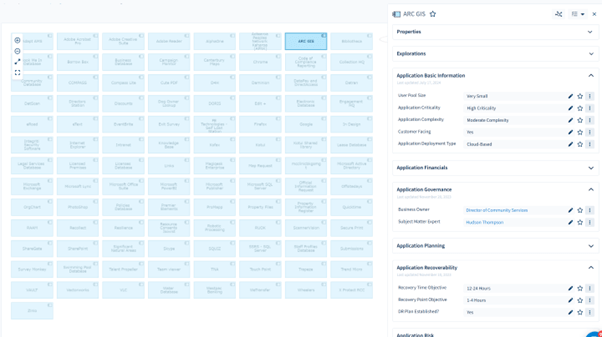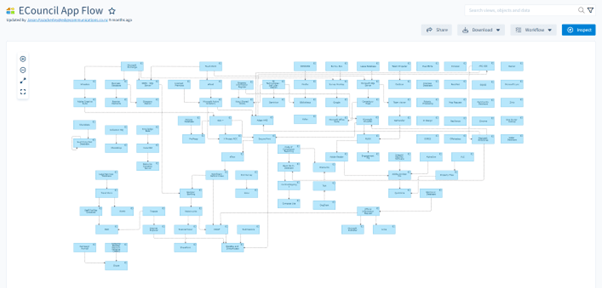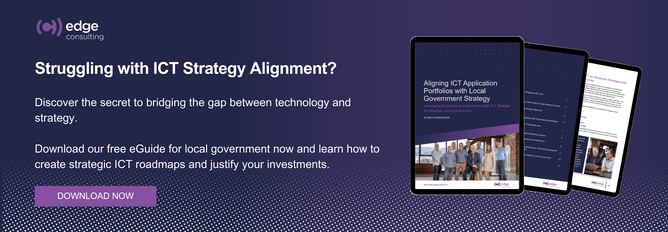How Enterprise Architecture can untangle the ‘spaghetti junction’
Digital Transformation has been great for knowledge sharing and overall efficiency for local government organisations. However, the visibility of data connections or APIs has become a huge problem. As more applications are implemented and connected, ICT environments have become more complex. These interconnected systems and applications form a tangled web – that we refer to as the ‘spaghetti junction’ – increasing the difficulty of maintaining and changing systems to meet organisational goals.
So, how do you resolve this complexity? Jason Fazackerley, our principal consultant for enterprise architecture, shares his experience with some useful suggestions, specifically for those in local government.
Why ICT complexity is a major challenge for local government
Managing an environment of interconnected systems isn’t easy, making it hard to predict outcomes and impacts of system changes, even when they may seem unconnected. A key issue with managing a complex ICT environment is the lack of visibility. When applications communicate in different ways—through varying protocols, data formats, and authentication methods—traditional techniques for tracking them can’t keep up.
Without proper clarity, change planning is impacted. These slow down decision-making and increase the risk of errors or unplanned disruptions. Traditional ICT management tools struggle to capture the full scope of these integrations, which is why the need for well-maintained portfolios, and relationship data sources, dynamic insights is more critical than ever.
Enterprise Architecture: The structured solution to ICT complexity
Edge Consulting’s practical implementation of Enterprise Architecture (EA) offers a structured approach to managing the complexity of interconnected ICT systems. By offering a clear view of how different applications and systems interconnect, EA allows organisations to map both the current and future states of their ICT environments. This continuously updated model is essential for understanding integration points and their broader implications.
Key strategies for managing ICT complexities
Leveraging metadata and organisational standards - providing a comprehensive view of integration points helps ICT leaders better understand the full scope of interconnected applications and their impact on the organisation. EA supports organisations in gathering and analysing crucial components, metadata, and relationships through workshops, interviews, and data discovery sessions.
Prioritising recoverability - collaboration with business units to identify and prioritise critical services that require high availability is key. EA supports this by mapping out important business services and their dependencies, helping organisations make informed decisions about recovery strategies and ensuring system resilience.
Uncovering hidden dependencies - by bringing together ICT specialists, data experts, Business Analysts, and development teams, EA facilitates workshops and discovery sessions that reveal hidden dependencies between systems. This structured approach ensures that all integration touchpoints are thoroughly mapped and documented, refining overall integration strategies.
Aligning ICT with business goals - starting from a business-driven perspective is essential for making sure that ICT investments align with the organisation’s broader objectives. EA offers a holistic view of how ICT systems support business goals, helping organisations better align their technology strategies with their operational needs and enhancing resilience.
Case study: A local government success story
A local government was grappling with a complex web of ICT integrations, or 'spaghetti junction,' they tackled this challenge by adopting an Enterprise Architecture framework. Through systematic workshops, they mapped out key systems and related integrations, uncovering undocumented data transactions.
By prioritising critical services and collaborating across departments, they ensured essential services could integrate effectively therefore automating key systems. The structured workshops and discovery sessions revealed hidden dependencies and allowed for more refined integration strategies. By starting from a business-driven perspective, the local government aligned its integration and automation strategies with broader organisational goals, ultimately streamlining its ICT environment and enhancing overall operational resilience.
This case underscores the value of Enterprise Architecture in simplifying complex ICT landscapes and improving decision-making.
Achieve clarity and alignment with Enterprise Architecture
For local government organisations, ICT integration poses significant challenges. However, by embracing EA, these organisations can navigate the 'spaghetti junction' of interconnected systems with clarity and purpose. EA provides the structured approach needed to gain visibility into how various applications interact, enabling informed decision-making and improved responsiveness to change.
The strategies outlined—leveraging related attributes or metadata, prioritising recoverability, uncovering hidden dependencies, and aligning ICT with business goals—empower local governments to tackle their unique challenges head-on. By systematically mapping their ICT environments, organisations not only enhance operational resilience but also ensure that their technology investments directly support overarching business objectives.
Ultimately, investing in EA is not just about simplifying ICT integrations; it’s about fostering a cohesive environment that enhances service delivery, strengthens community engagement, and prepares local governments for the complexities of the future. Embracing EA is a critical step toward achieving a more efficient, transparent, and resilient local government landscape.
Interested in learning more about EA? Download our guide on Aligning ICT Application Portfolios with Local Government Strategy.



